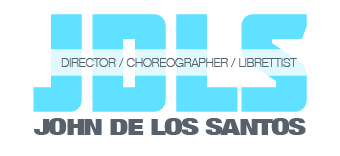STARDUST
World Premiere, Helios Opera: 2020
THE BOSTON GLOBE
With dreamlike music by New York City composer Felix Jarrar and a fantastical libretto by London-based poet B.L. Foxley, the visual extravagance of the final filmed version of “Stardust” belies its microbudget. Filmed entirely on smartphones, soprano Victoria Davis takes the spotlight in a journey through mythological archetypes and haunting multi-hued split-screen images. The mind behind these striking tableaux was director John de los Santos.
SCHMOPERA
In the wake of Black Lives Matter protests, many spheres of our social lives have had to ask themselves the ways in which they can elevate black voices in what they do. To address this front, Helios Opera pulled together an all-POC creative team, with music from Brooklyn-based composer Felix Jarrar and text from London-based writer B.L. Foxley, to create a world-premiere project to be premiered by black soprano Victoria Davis. Part of the goal was to produce something that elevated these voices, and on this front Helios Opera has certainly succeeded.
The result is Stardust, a song cycle consisting of three songs that explore a journey of self-liberation. As per the brief, it does contain some racial undertones (particularly in the first half, which makes an oblique reference to both lynchings and to the dual nature of how black people are viewed in American and British society), but as it evolves a narrative of self-actuation emerges.
Realizing a project like this would definitely incur a different approach, and on this front the video direction from John de los Santos absolutely proved to go in exactly that direction. The video direction opted for an Andy Warhol aesthetic that was all muted primary colors, bright lights, and multiple shots of Victoria Davis’ face all cut into a pastiche (and even featuring a double lip sync at one point), and it was an aesthetic that served the songs well. It also tied the text of the three songs into the Greek myth surrounding the fates, with the soprano picking up a spindle of thread at the end of Who Am I?, watching the threads unspool in The Devil, and then finally cutting them herself at the end of Mother Earth. The symbolism here was not the usual Fates symbolism that people tend to see (the creators were opting more for an arc where the soprano takes control of her own fate), and once the link was explained I felt it was a very appropriate one for the arc of the piece. And of course, all of it was beautifully sung and acted by Victoria Davis, who navigated the score’s prosody with an incredible command of the material and a wonderfully full voice, and communicating quite a lot with facial expressions (important since so much of the video was close-ups of her face.
I found it quite invigorating, and it was certainly a night at the opera I enjoyed as a whole package.
I CARE IF YOU LISTEN
As the performing arts continue to suffer from the ongoing repercussions of COVID-19, presenting organizations such as Helios Opera fight the loss of traditional performances with innovative online presentations. One such initiative from Helios Opera is called Modular Opera Project (MOP), a program that offers singers the chance to produce one-act operas from home.
Director John De Los Santos took inspiration from the three Greek Moirai, or Fates, in his vision for Stardust.
The most striking aspect of Stardust was its filmography and visual language. De Los Santos took inspiration from the films of John Waters and Andy Warhol, which use a similar triptych composition where three simultaneous shots are shown side by side on the screen. In the cycle’s second movement, “The Devil,” multiple angles of Davis are juxtaposed to evoke her struggle with the evil being, which perhaps was her all along. A red, circular light box, created by architect and lighting designer Fabian Hernandez, is covered with branches to evoke a mysterious and foreboding atmosphere.
In many ways, De Los Santos’ visuals for Stardust draw parallels to the lived experiences of artists during the pandemic. The circular light box immediately brings to mind the ubiquitous “ring lights” used for at-home lighting for livestreams, Zoom calls, and recording sessions, and the triptych composition echoes the all-too-familiar visual aesthetic of online meetings and displaced social events.
At the heart of Stardust is a powerful message: every ending is a new beginning, and every new beginning is an act of resilience in the shadow of oppression.


